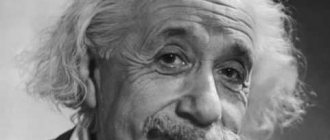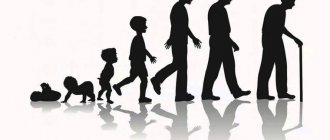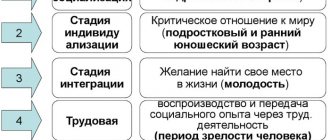Updated July 24, 2022 979 Author: Dmitry Petrov
Hello, dear readers of the KtoNaNovenkogo.ru blog. Sometimes we see a child walking home from school and throwing a candy wrapper past the trash can.
Or someone talks very loudly on public transport and everyone around can hear what kind of drama happened with his girlfriend.
And it happens that it is difficult for a person to communicate with others, he cannot at least say: “Hello.”
These are all examples of how someone has not fully gone through and mastered all the stages of socialization. What is it, what is the sequence here, what types of socialization is divided into - let's figure it out.
Socialization is teaching a person to comply with social norms
Socialization is the process of assimilation of social norms, morals, rules, and values by an individual so that he becomes a full-fledged unit of society with the ability to interact with the same other units.
Social norms are measures of the proper (desired) behavior of an individual that regulate relationships between people (making them acceptable). Norms are established common to everyone with characteristic rules of behavior and regulate social relations between people.
Social norms emerge over time as a result of the will and conscious activity of people. Moreover, they always correspond to the type of culture and the nature of socialization of society (different nations have different rules of good manners).
It is important to understand that social norms are divided into :
- Mandatory - for example, written into laws that require their implementation and provide penalties for non-compliance.
- Optional (unwritten) are etiquette norms, customs, traditions, rituals, religious norms and moral norms.
Socialization includes the acquisition of skills from such areas as :
- social;
- physical;
- intellectual.
Socialization is a two-way process. On the one hand, this is the transfer of information, experience and rules from society (what is this?). On the other hand, there is the perception and assimilation of them by a person. The success of the process depends on both the “teachers” (social agents) and the “student”.
There are people who parasitize on social norms, forcing others to comply with them, but absolutely do not follow them themselves (they only pretend to). These are the sociopaths we already talked about.
Ancient people
Ancient people ( paleoanthropes ) used a variety of stone and bone tools (knives, polyhedral tips, etc.). They lived in groups. Anthropologists believe that they communicated using gestures and emerging articulate speech. Neanderthals belong to this category of humanoid creatures . They lived among modern people. It is believed that the last Neanderthals went extinct approximately 40-50 thousand years ago. But some scientists believe that they could have survived in the inaccessible mountainous regions of Asia, in Siberia (“Bigfoot”).
How, where and when does the socialization process take place?
An important role is played not only by the innate characteristics of the individual, but also by the environment that has been built around him : parents, distant relatives, friends, classmates, classmates, people with the same circle of interests, work colleagues.
The formation of personality depends on their:
- type of thinking;
- level of development;
- education;
- aesthetic views;
- morality;
- traditions;
- hobbies.
In order for you to find out what moral values another person has, he does not necessarily have to give you a whole lecture about what his position in life is and his attitude towards various aspects of it.
People react to certain things not only verbally. There are different ways to express emotions, approval or contempt. This is how we learn their attitude towards us and our actions even without words, we adopt something, if it is a person that is meaningful to us - we socialize .
That’s why it’s so important to communicate with different people to expand your worldview.
We should not forget that the process of becoming a person in society occurs not only in childhood , but also continues throughout life. More and more new situations provide new experiences.
New conditions influence a person, under which he acquires new knowledge and skills. Adults are also able to rethink the moral standards they previously followed. For example, they get rid of their naive, childish views of the world.
If we look at socialization in a broader sense, we will see that it, in essence, helps to preserve society. The latter is constantly replenished with new members who need to be educated, given basic knowledge, and taught the rules of the hostel. Only under such conditions is its successful functioning possible.
From this we can conclude that socialization has 2 goals :
- Teach the individual to interact with society.
- Replenish society with a new cell so that it continues to prosper.
Social development of personality
Phases of personality formation in society:
- The formation of a person as an individual in society;
- Contradiction and inability to emphasize the individuality of the individual;
- Society's acceptance of individual personality traits.
Next, let's look at each phase in more detail.
The transition from one phase to another is possible only if life in society is stable.
In other words, if the social environment is always at the same constant level, and the subjects of society do not have an aggressive impact on the individual, then it has all the prerequisites for going through each of the three standard phases.
Agents of socialization, social statuses and roles
Agents of socialization are those people and institutions (organizations) that form our norms.
- In childhood, these are family, educational institutions, church, informal associations.
- In adult life, this is also added to: the workforce, the media, the state, political parties and other institutions (science, business, etc.)
So, throughout his life, an individual absorbs social norms, forms his social status and masters certain social roles that he has to try on. What it is? Let's get a look.
Social status is the place occupied by a person in society (cell), which determines the range of his rights and responsibilities.
We always occupy some position in society, which depends on our marital status, age, work, income, education, profession.
- We receive some statuses regardless of our desire. These are prescribed statuses - for example, son, daughter, man, woman, etc.
- Other statuses are called attainable - for example, husband or wife, janitor or president, etc.
A social role is a pattern of behavior that is oriented towards a certain social status.
For example, you had a child and you received a new status - mother or father. In this regard, you have a need to play a new social role as a parent in order to correspond to your new status. The difference from status is that it exists, but the role can be performed or not performed.
How does activity influence the formation of personality?
In the process of activity
a comprehensive and holistic
development of
a person’s personality occurs, his attitude towards the world around him is formed.
... Labor activity stimulates the rapid and successful formation of the spiritual and moral world of the individual
, determines the willingness to work hard and successfully.
Interesting materials:
How long to cook beans? How long should you cook mushrooms before frying? How long to cook quail eggs? How long to cook crayfish? How long does it take to cook peas in soup? How long does it take for eyelashes to recover? How to add oil to an automatic transmission? How should the mattress lie on the bed? How should chinos fit? How should pants fit?
Factors and types of socialization
We have already become familiar with the conditions that influence the formation of personality, so we only need to systematize this knowledge and supplement it.
Factors influencing socialization:
- Micro – those conditions and people that directly influence the formation of personality (relatives, upbringing with family, friends, work).
- Meso – location where an individual lives (district, city).
- Macro is the concept of influencing an individual on a large scale (government, planet, universe).
Classification of types of socialization depending on the age and development of a person:
- Primary – from birth to adulthood (25-30 years).
- Secondary is the breaking of old patterns. A person rethinks all those norms that were perceived in childhood and adolescence. New personal rules and views are formed. This type of socialization lasts until the end of life.
Types of personality formation based on another characteristic:
- Gender – depending on gender. Girls are raised and taught according to one principle, boys - according to another.
- Group - depending on the social group in which the individual spends most of his time (parents, circle of acquaintances, colleagues).
- Organizational – refers to socialization in a team (at study, work).
FIRST STEPS TO HUMAN BEING. PRIMATES
Through natural selection, we have developed the ability to resist; we don't give in to any bacteria without a hard fight
H.G. Wells
The extinction of the dinosaurs marked the beginning of the Cenozoic era. Small insectivorous creatures gave rise to many new species in a short time. This is how the ancestors of primates, the ancestors of Homo sapiens, appeared. They are believed to have descended from the order Plesiadapis . These animals were more like rodents than monkeys, but were adapted to life in the trees.
The first true primate was Archebus , who lived about 55 million years ago. This little monkey, measuring 7 centimeters, weighed only 20-30 grams. Archicebus ate insects. Its long tail and grasping limbs made it well adapted to life in the trees. This arboreal animal gave rise to two branches of primates. One led to tarsiers - small nocturnal insectivorous monkeys, the other - to apes , which include most modern monkeys and humans.
The first of the apes was Eosimia, which lived about 45 million years ago. Its size did not exceed the size of a human palm.
About 30 million years ago, a cooling event occurred on Earth, accompanied by another mass extinction. Primates managed to survive only in areas with hot climates. At the same time, some monkeys migrated to South America and were divided into broad-nosed and narrow-nosed . Scientists have discovered several ancestors of modern monkeys (Saadania, Proconsul and Dryopithecus) and humans.
- Saadania . This common ancestor of apes and monkeys lived on Earth 28-29 million years ago. Alas, it is difficult to reconstruct the full appearance of the creature from the found skeleton fragments. However, scientists found that the monkey was already quite large - weighing about 15-20 kilograms.
- Proconsul . This ancient representative of the apes lived in Africa about 20 million years ago. Primitive primates lived in the tropics and were vegetarians. Proconsuls weighed up to 40 kilograms.
- Dryopithecus . These primates lived about 9-12 million years ago. They still lived in trees, eating fruits and soft leaves. They became the ancestors of humans, gorillas and chimpanzees. Dryopithecus grew up to 60 centimeters and led a gregarious lifestyle.
About 10 million years ago, the Earth cooled again and the climate became drier. The area of forests has decreased, and vast areas have been occupied by savannas. Dryopithecus, who inhabited these places, inevitably had to get down from the trees and move on to life in open spaces. About 6-7 million years ago, Sahelanthropus - the first upright creature to live in Africa.
Ardipithecus arose approximately 4.4 million years ago . They were upright creatures, lived mostly in the forest and were omnivores. The average height of Ardipithecus reached 120 centimeters, and weight - 50 kilograms.
The next link in evolution leading to humans was the Australopithecus . They had a height of one to one and a half meters and a weight of up to 55 kilograms. About 3 million years ago, Australopithecines split into several branches, one of which led to humans, and the other subsequently became extinct.
The similarity between monkey and human DNA is about 90%.
Education as a means to the development of individuality
Education is recognized as the main factor in the formation of personality. During the educational process, children actively interact with peers, adults and the environment, and in a different way - they are socialized in society.
Components of education
- A child is an object of education. During the period of socialization, he develops subjective values, establishes a certain vision, worldview, and acquires habits, knowledge, and applied skills.
Note! There is often a tendency to copy the behavior of adults and individuals, since the student is under the constant influence of older people and the environment. Therefore, adults must set an example of correct behavior!
- Adults are the initiators of educational action, but at the same time they themselves are subject to education in various life situations of society.
- Society - a collective - creates conditions for self-affirmation, self-improvement, and satisfaction of aesthetic and moral needs.
- Social environment - affects the quality of the educational process within society, home, school.
Social education as a social institution
The concept of personality development
The process of personality formation, which begins in the first months of birth, continues almost continuously throughout life. An individual gains experience in communication, learns to adapt to the situation, realizes his uniqueness and tries to show it to others. Over time, there is a need to stand out from the crowd.
Note! Often the need to stand out in society and be useful to it occurs at the level of contradiction.
Later, the individual wants to be useful to others, to contribute to the development of society. All this is the formation of personality, which is characterized by different stages and phases. When describing how personality is formed, modern sources of information adhere to long-established definitions of these stages and phases of personality formation. They include information about how an individual behaves almost from birth, and what impact various factors have on his personal development.
The role of the family in education
Family upbringing plays a major role in shaping the younger generation. This is where preparation for adult life takes place. What is the significance of intrafamily personality formation, and what behavior should parents have in order for their pedagogical influence to be successful? A family is an organized structure; all actions in it must be coordinated. Raising children must fulfill certain functions:
- Child education.
- Instilling a love of creativity and art.
- Laying the foundations approved by society, the moral development of feelings.
- Formation of his personality.
- Providing conditions for the physical development of the child.
Physical development does not mean only morning exercises or performing physical exercises several times a week. Physical education has a positive impact on children's health and includes early development of motor skills such as unsupported walking, sitting and healthy lifestyle habits.
Children should show a love for physical education and sports from early childhood. It is recommended to do this by introducing an entertaining element to joint activities. Because play is considered the leading activity of a preschooler. When a child grows up, his parents will be his role model. Joint sports activities will improve health and increase family cohesion.
Correction of behavior culture
A culture of behavior is a set of norms and rules that all people must adhere to when living in society. Parents teach their preschooler to behave correctly from an early age. In this case, adults perform the following actions:
- They teach the rules of personal hygiene.
- The child is told how to speak correctly.
- Learn new words.
- Mom and dad instill a love of reading books.
- They teach the rules of etiquette and friendly communication.
- There is training in correct behavior with other people: educators, teachers, other children and relatives.
In fact, the child develops a culture of activity, speech and communication, as well as personal hygiene skills. The family lays the foundation for moral behavior. From an early age, many children know what is good and bad. This happens thanks to close relatives and parents.









